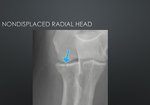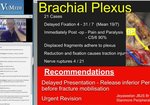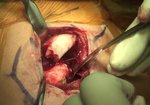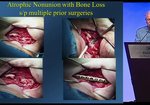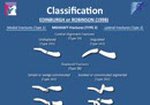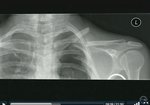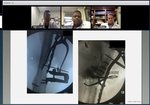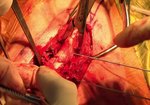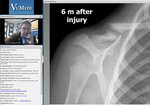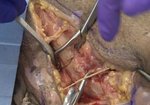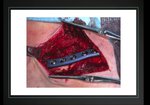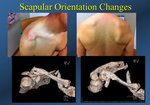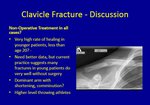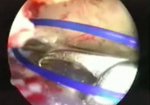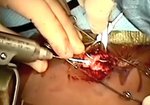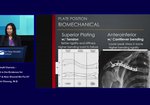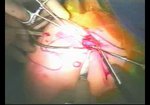
Video Player is loading.
Current Time 0:00
/
Duration 0:00
Loaded: 0%
0:00
Stream Type LIVE
1x
- 0.5x
- 0.75x
- 1x, selected
- 1.25x
- 1.5x
- 1.75x
- 2x
- Chapters
- descriptions off, selected
- captions settings, opens captions settings dialog
- captions off, selected
This is a modal window.
Beginning of dialog window. Escape will cancel and close the window.
End of dialog window.
10 seconds
Playback speed
This is a modal window. This modal can be closed by pressing the Escape key or activating the close button.
5,270 views
April 6, 2021
Dr. Peter Millett is a Vail, Colorado orthopedic shoulder surgeon in private practice with the ...
read more ↘ Steadman Clinic. He is an expert in treating clavicle fractures and offers this video on Intra-Medullary Fixation with a Clavicle Pin: (IM Fixation of Midshaft Clavicle Fracture). There are several techniques to surgically treat clavicle fractures. Another technique is explained in a separate video:
Plate Fixation with a Clavicle plate -- Surgical Technique
Clavicle fractures are common injuries and account for 2-5% of all adult fractures. Males involved in sporting activities that are younger than 30 years old and patients over the age of 70 with diminished bone density appear to be two distinct groups at higher risk for clavicle fractures.
More than two-thirds of these injuries occur within the middle third of the clavicle and are more likely to be displaced as compared to medial and lateral third fractures. Lateral clavicle fractures account for approximately 25% of all clavicle fractures. Medial fractures are least common comprising the remaining 2-3% of these injuries.
The primary goal of clavicle fracture treatment is to achieve bony union and restore shoulder girdle function thereby allowing patients to return to their pre-injury activity level.
It is generally agreed that non- or minimally displaced clavicle fractures are best treated non-operatively. A sling or figure of eight brace is typically applied for comfort and early range of motion is encouraged as discomfort allows. It appears that immobilization of 2 to 6 weeks, tailored by patient discomfort, followed by structured shoulder rehabilitation is successful for many patients. Contact sports should be avoided for a minimum of 4 -- 5 months in these circumstances.
Treatment of displaced fractures (where there is no bony surface contact between the fracture components) is more controversial, though several absolute indications for acute surgical intervention do exist. These include endangerment of the skin tenting, open fractures where there's the skin is open and a direct connection between the open air and the fracture exists and the presence of possible damage to nerves and/or blood vessels.
Fracture displacement or multiple fracture fragments, female gender, and advancing age have also been recently associated with less optimal outcomes and may be considered relative indications for acute surgical treatment. In chronic cases, initially treated with a sling or figure of eight brace, in which there's persisting pain and the fracture does not seem to heal, surgical treatment is also the next step.
↖ read less
read more ↘ Steadman Clinic. He is an expert in treating clavicle fractures and offers this video on Intra-Medullary Fixation with a Clavicle Pin: (IM Fixation of Midshaft Clavicle Fracture). There are several techniques to surgically treat clavicle fractures. Another technique is explained in a separate video:
Plate Fixation with a Clavicle plate -- Surgical Technique
Clavicle fractures are common injuries and account for 2-5% of all adult fractures. Males involved in sporting activities that are younger than 30 years old and patients over the age of 70 with diminished bone density appear to be two distinct groups at higher risk for clavicle fractures.
More than two-thirds of these injuries occur within the middle third of the clavicle and are more likely to be displaced as compared to medial and lateral third fractures. Lateral clavicle fractures account for approximately 25% of all clavicle fractures. Medial fractures are least common comprising the remaining 2-3% of these injuries.
The primary goal of clavicle fracture treatment is to achieve bony union and restore shoulder girdle function thereby allowing patients to return to their pre-injury activity level.
It is generally agreed that non- or minimally displaced clavicle fractures are best treated non-operatively. A sling or figure of eight brace is typically applied for comfort and early range of motion is encouraged as discomfort allows. It appears that immobilization of 2 to 6 weeks, tailored by patient discomfort, followed by structured shoulder rehabilitation is successful for many patients. Contact sports should be avoided for a minimum of 4 -- 5 months in these circumstances.
Treatment of displaced fractures (where there is no bony surface contact between the fracture components) is more controversial, though several absolute indications for acute surgical intervention do exist. These include endangerment of the skin tenting, open fractures where there's the skin is open and a direct connection between the open air and the fracture exists and the presence of possible damage to nerves and/or blood vessels.
Fracture displacement or multiple fracture fragments, female gender, and advancing age have also been recently associated with less optimal outcomes and may be considered relative indications for acute surgical treatment. In chronic cases, initially treated with a sling or figure of eight brace, in which there's persisting pain and the fracture does not seem to heal, surgical treatment is also the next step.
↖ read less
Comments 3
Login to view comments.
Click here to Login



